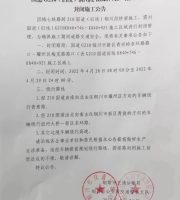The results show that the biggest difference between the quality of fly ash is that low-quality fly ash contains metal aluminum, while high-quality fly ash does not.
(3) Simple method: ① visually check the color of fly ash, mix clean water with dark black fly ash (1:0.3), find sticky black and greasy hands, and ask to leave the site.
04 conclusion (1) with the increasingly stringent national requirements on waste gas emission from thermal power plants, thermal power plants need to desulfurization and denitrification the flue gas discharged.
The concrete out of the machine has good workability and the slump can meet the design requirements of 180 ~ 220mm, but the concrete just out of the machine has pungent smell; During the construction on that day, abnormal phenomena also occurred during vibration and plastering, and there was gas bubbling outward on the concrete surface.
(2) Fly ash with dark black color or pungent smell (ammonia smell) after mixing with water shall be rejected.
The commonly used denitration technology is to spray ammonia or urea into the high-temperature furnace.
There is a pungent ammonia smell in the plant area of some grinding aid manufacturers, which will directly affect the ammonia release in concrete, and the scientific use of grinding aids will bring significant economic benefits to the enterprise, During the transportation of concrete from the mixing plant to the site, the pungent smell of concrete after pouring and tamping is not obvious because ammonia is gradually dissolved in water.
This low-quality fly ash will react chemically in alkaline concrete to produce combustible hydrogen, resulting in foaming of poured and tamped concrete..
The test results and practical application show that the use of this kind of fly ash has no obvious adverse effect on concrete.
(2) As the cement hydration reaction produces a strong alkali, Ca (OH) 2 makes the concrete alkaline, while aluminum will react chemically under alkaline conditions to produce H2.
The left figure shows a worker lighting bubbles with a lighter, and a slight blasting sound can be heard.
① The fresh concrete has a pungent smell; ② After pouring and tamping, the bubbles on the bearing platform are ignited with a lighter, with a slight blasting sound; ③ After the pores are wiped off by the secondary plastering, new pores are generated soon.
(1) It is suggested to carry out chemical analysis or simulation test when using inferior fly ash.
03 solution (take measures) the test shows that there are three conditions for generating bubbles: inferior fly ash, alkaline solution and certain temperature.
2Al + 2OH – + 2H2O = 2alo2 – + 3h2 ↑ (3) the pungent smell of outgoing concrete may be due to the grinding aids mixed in the processing of cement and fly ash.
Due to the tight construction period and the short supply of high-quality fly ash, the mixing plant may use low-quality fly ash containing aluminum metal.
(1) In order to find out the difference of chemical composition between good and bad fly ash, XRD analysis and related experiments were carried out.
The next morning (after 10h), the operators found that there were many pores on the surface of the concrete poured and tamped the previous day, with a spacing of about 200 ~ 500mm, and some were still bubbling; Where there is a thin layer of ponding on the concrete surface, bubbles can be clearly seen gathering on the surface of the cement slurry; Pores formed on the concrete surface after bubbles emerge can also be seen in the part without ponding; From concrete mixing to bearing platform pouring and tamping, the following three problems are found.
The heat generated by the hydration reaction makes the reaction more intense, so the concrete surface bubbling phenomenon will be formed.
At this time, the cementitious materials react chemically in the alkaline concrete solution and release combustible gas, It is preliminarily judged that some substances in inferior fly ash produce chemical reaction in concrete and emit gas.
02 cause analysis preliminarily determines that the foaming phenomenon is related to a certain temperature and inferior raw materials.
The concrete produced by the same batch of raw materials in the same concrete mixing plant has the same problems in varying degrees, resulting in blistering on the concrete surface.
Put the beaker that produces a large amount of gas indoors and cool it to 20 ℃, the gas will no longer be produced.
Then put the beaker into a 65 ℃ oven for heating, and a large amount of gas will be produced after 15min.
In a high-speed railway construction site, the foundation pile and cushion cap concrete are centrally produced, transported and pumped by the concrete mixing plant built by the company.
In view of the shortage of primary fly ash resources in this area, this kind of fly ash with slightly lower quality than secondary fly ash is also widely used.
A simulation test was conducted for the above phenomena: put the cementitious materials (cement and two kinds of fly ash) into the beaker containing water or alkaline solution respectively, place them in the oven at 65 ℃ for 30min, and observe the change of the solution.
The concrete mixing is carried out according to the normal procedures.
Bubbling occurs in the concrete of the bearing platform of a construction site, as shown in Figure 1.
In order to improve efficiency, some manufacturers add grinding aids that release ammonia when processing fly ash, All these will lead to the pungent smell of the discharged concrete.
The reaction equation is as follows: tricalcium silicate hydration: 3CaO · SiO2 + nH2O = xcao · SiO2 · yh2o + (3-x) Ca (OH) 2 dicalcium silicate hydration: 2CaO · SiO2 + nH2O = xcao · SiO2 · yh2o + (2-x) Ca (OH) 2 although the solubility of calcium hydroxide is small, it is a strong alkali, so the concrete still has strong alkalinity.
② After mixing with clean water, the smell has a pungent and abnormal (ammonia) smell, and it is required to leave the field.
After the concrete is poured for 10h, the hydration heat is generated with the cement hydration reaction, resulting in a higher internal temperature of mass concrete.
The test results showed that: ① there was no significant chemical reaction between cement and high-quality fly ash in water or alkaline solution to produce gas; ② Inferior fly ash (dark black fly ash) will react chemically in alkaline solution to produce a large amount of gas.


